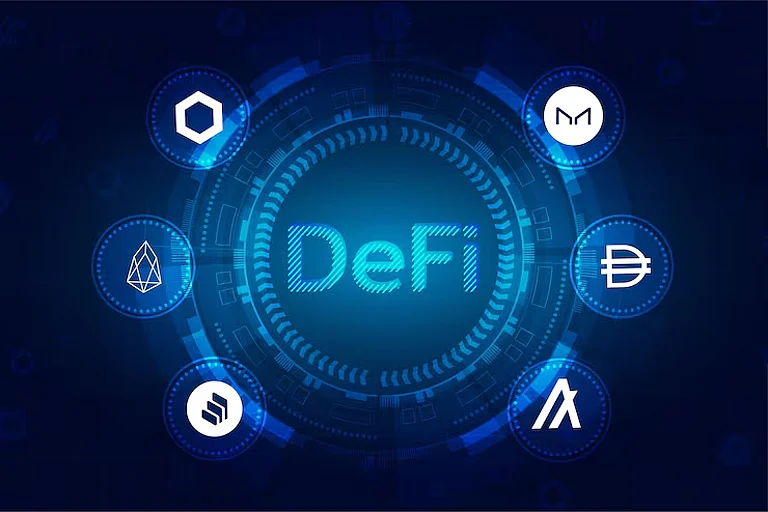In the last decade, crypto assets have evolved from being a niche to a mainstream financial product. A currency that was considered speculative digital tokens in the past is now at the forefront of debate about the future of money, investing, and decentralized finance. So what are crypto assets, and why are they significant, and how do they fit into emerging models such as DeFi Lending and Borrowing?
This paper dives deep into the world of crypto assets, and in doing so, it exposes their meaning, uses, risks, and potential, as well as how they facilitate innovation in decentralized financial systems.
Understanding the Basics of Crypto Assets
Crypto assets are digital assets grounded in cryptography and blockchain technology to offer security, openness, and decentralized ownership. They are not issued or controlled by central banks or governments like traditional financial instruments. Instead, they are disseminated via distributed ledgers where every transaction can be verified by members of the network.
There are many different forms of crypto assets. Bitcoin and Ethereum are cryptocurrencies that primarily exist to serve as mediums of exchange and stores of value. There are utility tokens that give access to specific services on blockchain networks, security tokens being ownership of real-world assets. Non-fungible tokens, or NFTs, have also entered the fray by being a tokenization of unique objects such as art, collectibles, or digital identities.
These different categories indicate the ways in which crypto assets are far more diverse than "digital money." They are programmable, borderless, and flexible instruments that can be utilized across numerous industries.
Why are Crypto Assets important?
The significance of crypto assets lies in the fact that they have the ability to transform financial systems. In many ways, they upset the traditional banking and investing framework by giving us models that are open, inclusive, and efficient.
They enable real-time cross-border payments, readily available opportunities, and new forms of ownership not previously possible using traditional financial instruments. To residents of underbanked populations, crypto assets offer financial independence and access. To investors, they introduce one to a rapidly expanding asset class capable of competing with traditional equities and commodities.
One of the most powerful applications of crypto assets is in decentralized finance, or DeFi. Through smart contracts on platforms like Ethereum, users are able to lend, borrow, swap, and invest without the intervention of an intermediary. It is here that the concept of DeFi Lending and Borrowing is most critical.
The Application of Crypto Assets in DeFi Lending and Borrowing
At the heart of decentralized finance is the use of crypto assets either as collateral or as liquidity. DeFi Borrowing and Lending protocols facilitate individuals lending their crypto assets to other users for interest, or borrowing assets by providing collateral. The whole mechanism is operated through smart contracts, thus doing away with any banks, credit checks, or middlemen.
For example, when someone has Ether but doesn't want to sell, he can invest it into a DeFi platform as collateral and borrow stablecoins in return. The smart contract ensures that if the value of collateral goes below some threshold, it gets liquidated to protect lenders. This creates a self-sustaining system where one has faith in code rather than institutions.
Crypto assets fuel this system. DeFi Lending and Borrowing would be impossible without crypto assets. The range of assets to be supported on these platforms also determines the degree of flexibility and creativity within the system.
Pros of DeFi Lending and Borrowing
The combination of crypto assets with decentralized financial models has several benefits for users. One of the principal advantages is availability. Any individual with a digital wallet and internet access can avail of DeFi Lending and Borrowing regardless of geographical location or banking status.
Transparency is another benefit. Since transactions are recorded in blockchains, users can see all the transfers of funds. Interest rates and collateral fees are also available for viewing, unlike banking systems where information can be opaque.
Additionally, yield opportunities offered by DeFi Lending and Borrowing can be greater than yields from traditional savings accounts, hence making them attractive to investors seeking alternative sources of income.
Risks and Challenges with Crypto Assets
Although the temptations are great, it is also important to look at the risks of crypto assets and how they behave in decentralized finance. Market volatility is by far the best-known risk. The value of crypto assets can shift dramatically over a short period of time, which impacts collateralized loans in DeFi applications.
Technology risks exist as well. Smart contracts, innovative as they are, are not vulnerability-free or bug-free. Hacks and exploits have caused enormous losses in some cases. Lack of regulation gives another degree of anxiety, as governments around the world continue to hammer out frameworks for regulating crypto assets and decentralized platforms.
When it comes to DeFi Borrowing and Lending, threats are also the risk of liquidity shortages and the possibility of immediate liquidations during decreasing markets. Therefore, while the potential is exciting, there is a task on the users' part to get informed and be cautious.
The Future of Crypto Assets and DeFi
The destiny of crypto assets appears tied directly to the growth of decentralized finance. As blockchain technology evolves and testing of scalability unfolds, the use of crypto assets in DeFi Lending and Borrowing will continue to expand. Institutional capital is already flowing into the sector, bringing legitimacy and larger sums of capital.
Regulatory frameworks will also dictate the way forward for the industry. Clearly defined regulations can facilitate greater acceptability by protecting users and reducing risks, and overly strict rules may inhibit growth.
In the coming future, the incorporation of actual assets in blockchain platforms—i.e., tokenized property, bonds, or stocks—can further make crypto assets more essential in the financial markets. Here, DeFi Lending and Borrowing can compete with, or even surpass, traditional lending structures on size and efficiency.
Conclusion
Cryptos are not just virtual currency; they represent a paradigm shift in the creation, transfer, and storage of value. Their use in DeFi Lending and Borrowing highlights the promise of decentralization to democratize finance, make it more transparent and efficient.
Although there are risks involved, the potential of crypto assets to revolutionize the financial framework cannot be overlooked. With their adoption on the rise, they will be a fundamental aspect of global finance, shaping new frameworks that combine technology, innovation, and human brilliance.

























